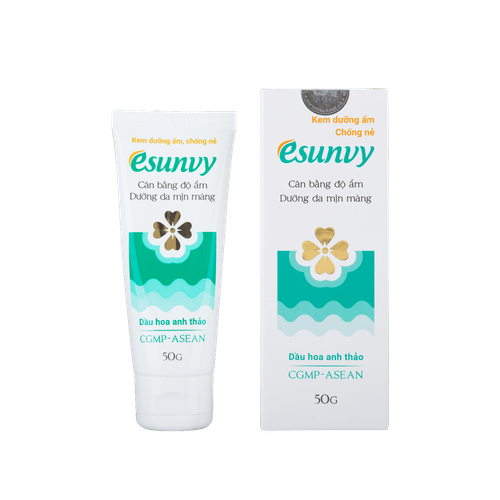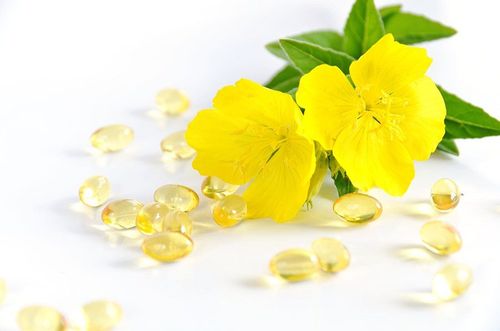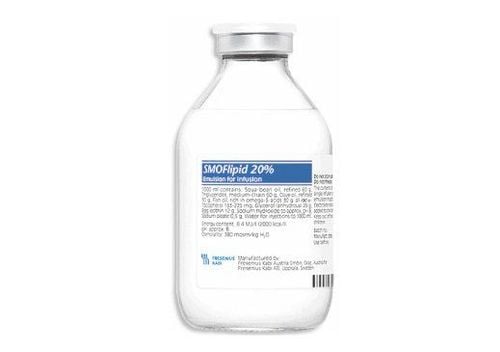This is an automatically translated article.
When a woman has not had a period for 12 months, they have actually gone through menopause. Symptoms may still continue and subside over time. Evening primrose oil is a treatment to relieve pain and discomfort during menopause.
1. What is Evening Primrose Oil?
Primroses are flowers native to North America but they can also be found in Europe and the Southern Hemisphere. The primrose has yellow petals and blooms in the evening.
In the past, Native Americans used primrose for medicinal purposes. The leaves are used to cure minor wounds and sore throats, while the whole plant is used to cure bruises.
Modern medicine uses evening primrose seed extract in supplements to treat eczema and pre-menopausal symptoms. Evening primrose oil (EPO) is high in fatty acids.
2. How to use Evening Primrose Oil

Dầu hoa anh thảo có thể sử dụng để uống trực tiếp hoặc bôi vào chỗ bị thương
Your body needs a balance of nutrients and fatty acids to work at its best. Omega 3 fatty acids and omega 6 fatty acids are essential for brain function and functioning, bone and joint problems. You can only get these acids through foods and products like evening primrose oil.
Evening primrose oil contains high levels of gamma linolenic acid (GLA) and linolenic acid, both omega 6 fatty acids. This acid has the ability to reduce inflammation.
Evening primrose oil can be used to drink directly or apply to the wound. It is necessary to consult a doctor about the dosage to use. If the dose is too high, you may experience side effects.
3. Side effects of evening primrose oil
Short-term use of evening primrose oil is proven to be completely safe. However, this oil should not be supplemented for long periods of time.
Evening primrose oil can cause some side effects such as:
Stomach pain Abdominal pain Headache Nausea Diarrhea Allergies Bleeding Convulsions. Doctors recommend taking this oil supplement and not in combination with other medications. When combined with other drugs, bleeding may occur, increase the risk of seizures, and decrease the effectiveness of the concomitant medications.
When using this product for wound healing, evening primrose oil has very few side effects, but an allergic reaction can still occur. Besides, using evening primrose oil helps to balance hormones, reducing sex drive for women.
4. Supplementing with evening primrose oil for pre-menopausal women

Lo lắng, trầm cảm, mụn trứng cá, mệt mỏi và đau đầu là những triệu chứng phổ biến của PMS
PMS is a premenstrual syndrome associated with somatic and behavioral depressive symptoms during a woman's menstrual period. Anxiety, depression, acne, fatigue, and headaches are common symptoms of PMS. Insomnia and suicidal thoughts are serious symptoms of perimenopausal disorder. About 85% of premenopausal women are affected by these symptoms.
PMS is characterized by more than 150 clinical symptoms (behavioral, psychological, and physical) including cyclical chest pain, headache, back pain, irritability, depression, anorexia, and syndromes Irritable bowel during the luteal phase of the menstrual cycle. Low levels of prostaglandin E 1, due to deficiency of essential fatty acids cause a high sensitivity to prolactin, produced at the time of ovulation and elevated levels during the luteal phase.
Therapeutic efficacy of evening primrose oil in the management of PMS has been the subject of numerous clinical trials. Linoleic acid present in evening primrose oil promotes prostaglandin synthesis and reduces PMS. The first report on the effectiveness of evening primrose oil in PMS was meta-analyzed in 1994. This meta-analysis was performed in seven placebo-controlled clinical trials, five of which included obvious randomness.
From these 7 randomized clinical trials, only two were well-controlled studies, but the small sample sizes of these two studies limited conclusions about the effectiveness of evening primrose oil. dark in PMS. The only finding of this meta-analysis was the safety of taking 3-6g of evening primrose oil daily in people with PMS.
In another study, the reduced efficacy of 180 mg/d-linoleic acid was compared with the use of placebo on the clinical symptoms of 28 women with PMS during the three luteal phases. The patients in the placebo group were given cooking oil without olenic acid-linolenic acid.
Blood samples for three cycles, duration and severity of symptoms compared in groups. The concentrations of stearic acid, oleic acid and dihomo-olen-linolenic acid, palmitic acid and olenic acid in plasma phospholipids significantly reduced the follicular and luteal phases.
Irritable bowel syndrome is the most common symptom of perimenopausal women, followed by breast swelling, drowsiness. After treatment, patients in the lin-linolenic acid group had higher β-linolenic acid and dihomo-olen-linolenic acid in the plasma phospholipid group compared with the placebo group. In women's severity and duration of perimenopause (physical, mental, and social), irritability improved in the olenic acid group compared with the placebo group.
The use of evening primrose oil helps relieve uncomfortable symptoms of perimenopause such as hot flashes, irritability, nervousness, trouble sleeping.
Please dial HOTLINE for more information or register for an appointment HERE. Download MyVinmec app to make appointments faster and to manage your bookings easily.
Articles referenced sources: healthline.com, ncbi.nlm.nih.gov












